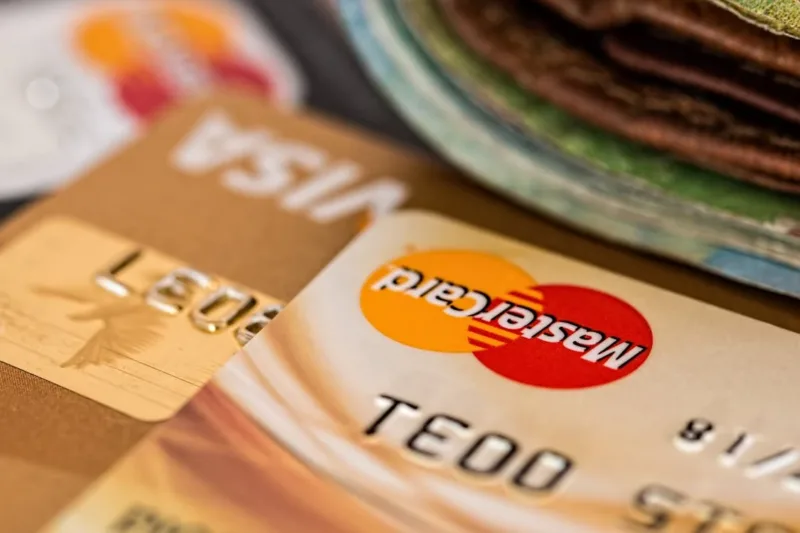Turning a good credit score into a financial asset isn’t just about securing lower interest rates; it’s about unlocking real, tangible opportunities to boost your income. By strategically leveraging a high credit score, you can access premium financial tools and favorable lending terms to significantly enhance your financial freedom. Imagine using these advantages to invest in side hustles, take entrepreneurial risks, or even snag rental properties with minimal upfront cash.
He’s seen it firsthand: A stellar credit score transformed his friend’s ability to secure low-interest personal loans for a startup, effectively slashing initial expenses and expediting the path to profitability. She’d been stuck with high interest rates that ate into her profits until she made a concerted effort to improve her credit score. This opened doors she didn’t even know existed—think lender-approved business lines of credit, lower rates on auto loans for new delivery vehicles, and more.
🌟 Top Picks for Online Earnings! 🌟
Dive into our handpicked selection of the best platforms to boost your online income. Trusted by thousands, these platforms are a must-try for anyone looking to make money online.
Turn your opinions into cash with one of the most reputable online survey platforms. Explore Survey Junkie
From watching videos to shopping online, Swagbucks rewards you for everyday online activities. Dive into Swagbucks
Get rewarded for shopping, taking surveys, and more. Check Out Lifepoints
Discover a curated list of remote and flexible jobs. Find Jobs on FlexJobs
Consider the everyday perks, too. Better credit can mean higher limits on cash-back credit cards or premium reward cards, turning day-to-day spending into a money-making venture. They say good credit is only valuable when you need a loan, but with some creativity and strategic planning, it can become a steady stream of financial growth, putting more cash in your pocket and fueling your dreams.
Understanding Your Credit Score’s Value

A credit score isn’t just a random number; it’s a key to many financial doors. Ranging from 300 to 850 in most scoring models, it reflects your creditworthiness. Let’s break it down.
Having a high score can save you thousands. Lower interest rates on loans and mortgages are common benefits. These rates make a significant difference in monthly payments and overall costs.
Credit scores also impact credit card approvals. Many premium cards require a high score. They offer perks like cashback, rewards points, and travel benefits. Low scores can also mean higher security deposits on utilities or rentals.
Consider this: Someone with a score of 750 could secure a loan at 3% interest, while someone with a score of 600 might only get 8%. That difference could amount to hundreds of dollars each month, thousands over the loan term.
Using your credit score strategically involves understanding what factors are at play. Payment history plays a big part, but so does credit utilization. Manage balances wisely to keep your utilization low.
Remember, it’s not just about getting approved; it’s about getting the best terms possible. A good score is a powerful negotiator.
In today’s gig economy, freelancers and small business owners find their credit scores even more critical. Lenders view high scores favorably, easing the borrowing process for business expansion.
To prioritize and protect your score, make timely payments, and monitor your credit report. Regular monitoring ensures no surprises when you need your score the most.
See Related: How to Earn Passive Income with Online Courses
Credit Card Arbitrage

Credit card arbitrage generates profit by taking advantage of the introductory 0% APR offers on credit cards. With these offers, individuals can borrow from a credit card at no interest and invest that amount at a higher interest rate. The key is to ensure that the return on investment exceeds the cost of borrowing.
For instance, imagine someone opening a new credit card with a 12-month 0% APR on balance transfers. They could transfer $10,000 to their checking account and then invest it in a high-yield savings account (HYSA) with a 4% annual interest rate.
Example:
| Amount Borrowed | Interest Rate | Investment Return | Profit |
|---|---|---|---|
| $10,000 | 0% for 12 months | 4% from HYSA | ~$400 |
Pros and Cons
Pros:
- Potential to earn risk-free returns: Especially if invested in FDIC-insured savings or CDs.
- No interest cost during the promo period: This means all returns are pure profit.
Cons:
- Risks to credit score: Opening new lines and high balances can lower credit score.
- Need for discipline: Invested funds must not be spent, as repayment will be due after the promo period.
To illustrate, Jane, a savvy investor, once made $1,000 using this strategy with multiple cards. She kept meticulous records and never missed a payment. Her story shows that success is achievable with careful planning.
Therefore, credit card arbitrage can be a clever way to make money if you stay disciplined and informed. While beneficial, this financial hack demands rigorous management of your finances and credit score.
Read Also: Maximizing Your Wealth: Creative Ways to Monetize Your Home
Peer-to-Peer Lending

Peer-to-peer (P2P) lending offers an innovative way to monetize a good credit score. It connects borrowers directly with investors through online platforms, bypassing traditional banks. This model provides more competitive interest rates for borrowers and attractive returns for lenders.
Interest rates on P2P loans typically range from 6% to 36%. Lenders often charge origination fees, varying between 1% and 8%. Given the potential for high returns compared to traditional savings accounts, these platforms can be an enticing venture for investors.
Popular Platforms
Lending Club
- Founded: 2007
- Loan Range: $1,000 to $40,000
- Investors: Can start with as little as $1,000
- Notable: Facilitated over $50 billion in loans
Prosper
- First U.S. P2P lending platform
- Loan Range: $2,000 to $50,000
- Fast funding process
These platforms vet borrowers’ credit scores, ensuring that those with higher scores receive lower interest rates. This aligns perfectly with the needs of individuals wanting to capitalize on their good credit.
Borrowers with lower credit scores can also access P2P loans, though they might face higher rates. For example, a $15,000 four-year loan can have an APR of 28.7%.
Investors enjoy the diverse opportunities P2P lending presents. They can spread their investments across various loans, minimizing risk. With the growth trajectory of P2P lending-from $5.5 billion in 2014 to an expected $150 billion– it’s clear that this sector is reshaping the lending landscape.
See Related: How To Earn Of Passive Income With Dividend Stocks
Building a Credit-Based Business

Creating a business model based on leveraging credit requires meticulous planning and strategic execution. It starts with establishing a solid foundation. Entrepreneurs should legally register their business, ensuring its identity is separate from personal finances. This step is crucial for building credibility and gaining access to credit opportunities.
Regularly reviewing your business credit report is essential. Think of it as giving your financial health a check-up. Any discrepancies or inaccuracies can negatively impact your credit score, so maintaining accuracy is important.
Opening accounts with vendors that report payment history can significantly boost creditworthiness. These accounts showcase a business’s ability to manage finances responsibly. Paying bills on time and in full helps build a positive credit history.
Next, consider applying for credit lines or loans from financial institutions. This might involve working with Dun & Bradstreet, Experian, or Equifax. Each bureau has its own way of assessing business credit, so diversifying your credit sources can be beneficial.
Monitoring historical payment behavior with previous creditors plays a major role in determining a business’s credit score. Consistency in handling credit responsibly can lead to high credit scores, ranging from 0 to 100. Scores closer to 100 represent a lower risk to creditors.
Lastly, don’t just focus on obtaining credit but also on how it’s managed. Utilizing credit responsibly—keeping balances low and making timely repayments—can create a robust business credit profile. This credibility opens doors to larger lines of credit and better interest rates, fueling business growth.
See Related: The Best Passive Income Ideas to Start Today
Real Success Stories

Real-life experiences can resonate deeply, sparking motivation and a sense of possibility. Here are some inspiring stories of individuals who drastically improved their credit scores and, in turn, unlocked new financial opportunities.
John started his journey with a daunting 300 credit score. After realizing the impact of his financial mistakes, he used tools like Bright Builder. Over time, his score climbed to 675. His transformation wasn’t overnight; it came from consistent efforts and learning about responsible credit management.
Sarah struggled with a low credit score due to missed payments and high balances. She joined a credit repair program that taught her smart credit practices. She gradually saw her credit score rise by sticking to this plan, proving the power of sustained effort.
In another case, Emily rebuilt her credit from scratch. She meticulously tracked her expenses and ensured timely payments. Her methodical approach paid off, teaching the importance of patience and vigilance in credit repair.
Michael’s story showcases resilience. After bankruptcy, he dedicated himself to improving his credit by using secured credit cards wisely and promptly paying off debts. His journey teaches that setbacks are not the end but a chance to rebuild stronger.
These real success stories highlight the possibilities that come with disciplined financial habits. By leveraging available resources and staying committed, anyone can improve their credit score, opening new doors to financial freedom.
Leave a Reply